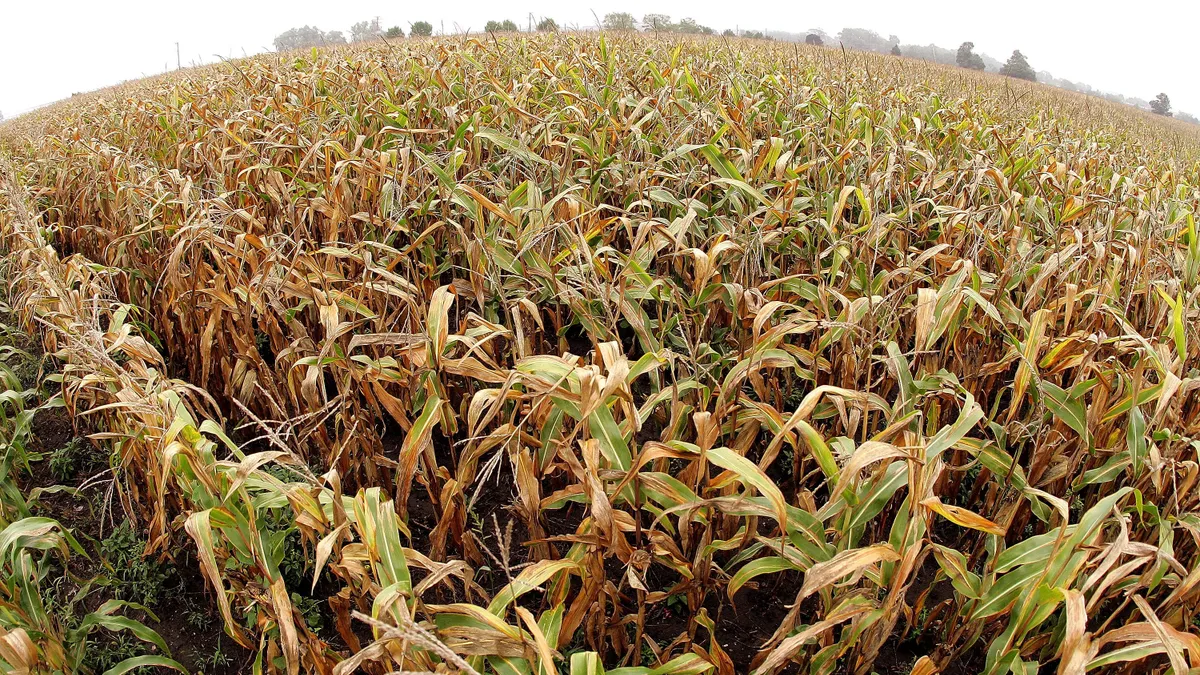Dive Brief:
-
The U.S. Department of Agriculture on Wednesday raised its domestic corn production outlook for the 2023/24 marketing year due to greater-than-expected planted and harvested acreage.
-
The agency increased its production estimates by 55 million bushels, though it noted they were partially offset by an average yield reduction of 4 bushels per acre. Wheat supplies are forecasted higher based on production, which is set to grow by 74 million bushels.
-
The outlook, published in the World Agricultural Supply and Demand Estimates, comes as timely rain and cooler temperatures moderate the impact of dry weather on parts of the Corn Belt last month.
Dive Insight:
Early year drought conditions across the Midwest prompted USDA to make revisions to its crop estimates midway through the year, something that doesn’t typically happen.
The last time USDA changed the corn yield estimate in July was in 2012, when historic drought conditions wiped out much of the crop after farmers had one of their best years for planting. The yield estimate was revised downward by 20 bushels per acre during that period.
In the latest report, corn yield revisions weren’t as stark. Despite lower-than-expected precipitation data in the major Corn Belt states last month, the USDA is expecting the recent rain and cooler temperatures to ease conditions.
“For much of the crop the critical pollination period will be in the coming weeks,” the July 12 report said.
Wheat supplies are raised on larger production, harvested area and yields. Meanwhile, two consecutive years of drought have reduced ending stocks for Hard Red Winter wheat to its lowest level in 16 years, despite decreased total use, according to the report. Ending stocks for the 2023/24 marketing year are projected at 592 million bushels, 30 million higher than last month.
Soybean production, on the other hand, is expected to falter. The USDA reduced supply estimates by 185 million bushels on lower production with ending stocks for the year projected to be down 50 million from last month.
Raised outlooks for corn and wheat come amid a mixed forecast for global grain production. Wheat is expected to be down due to smaller crop numbers in Argentina, Canada and Europe. Meanwhile, corn is expected to be higher with increased production from the U.S., Canada and Ukraine.











